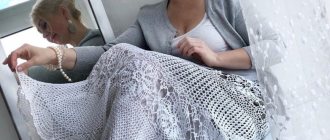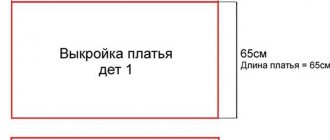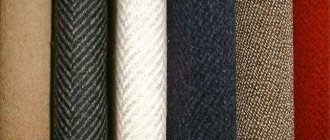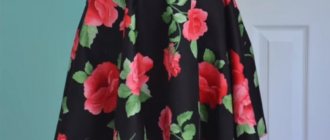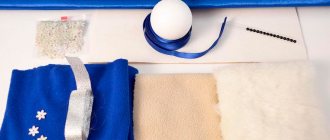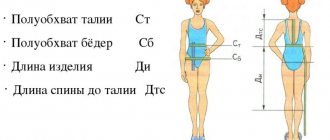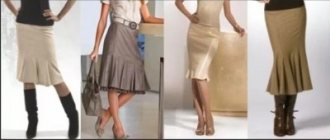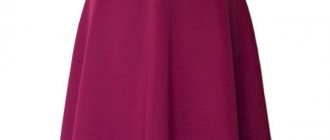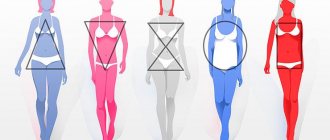This style elegantly emphasizes the hips and creates a light and active hemline. It is always relevant , regardless of the time of year, age, or the fullness of the female figure, and has long become a classic for all types of female silhouettes.
A godet skirt is a skirt style where the upper part has a tight-fitting silhouette and the lower part has a flared silhouette. This option most favorably emphasizes the female silhouette and at the same time provides sufficient freedom of movement even when walking quickly. The cut of the skirt consists of 4 or more wedges.
The parts of the skirt can be one-piece (the wedges are cut out together with fragments of the skirt itself from one piece of fabric), or the wedges are sewn into the seams or into the slits at the bottom of the product. Those with narrow hips can afford a mini skirt. For a better fit of the skirt with a corpulent female figure, it is desirable to increase the number of wedges.
The length of a year skirt, the number of details and the degree of flaring can vary depending on height and fullness, advantageously emphasizing the features of a woman’s figure.
The easiest and fastest way to sew a godet skirt with your own hands is a skirt consisting of six wedges.
Taking measurements
The first step in sewing any product is taking measurements. You will need to measure your waist, hips and determine the length of the product.
The next measurement is the circumference of the hips , taking into account the protrusion of the abdomen. To define it, tie a ribbon or thick elastic band at the waist. Under it, at the level of the navel, insert a regular long ruler pointing downwards. Measure the waist circumference along the tape and the hip circumference along the protruding places of the buttocks and in front, taking a ruler (measurement taking into account the abdomen).
Divide the resulting values in half and write them down as half-waist circumference (Wt) and half-hip circumference (Sb). the desired length of the skirt in front, from the braid at the waist down with a centimeter or a long ruler (DlIzd).
The basis for constructing a pattern for a godet style skirt will be a wedge. Make the necessary calculations using the following formulas:
- The size of the upper part of the wedge along the waist line: (St + Fri) / 6;
- The width of the wedge along the hip line: (Sb + Pb) / 6.
Letters and numbers in formulas:
- St – waist semi-circumference;
- Fri – waist increase 0.5 cm;
- Sb – hip semicircle;
- Pb – increase in hips 0.5 cm;
- 6 is a number that determines the number of skirt wedges.
Materials
These skirts are made from various materials, both traditional skirt fabrics and a wide variety of textured fabrics:
- tweed;
- twill;
- denim;
- natural, artificial leather and suede;
- velvet, plush, corduroy;
- thick cotton fabrics;
- viscose;
- mixed fabrics, including those with silk thread.
Light, flowing fabrics are also perfect for the year; they will give their owners airiness and grace. It’s no wonder that wedding dresses with a mermaid skirt have not lost their relevance for several years.
We offer you to create interesting models with your own hands with step-by-step instructions for beginners.
Interesting! The denser the fabric, the smaller the width of the wedges along the hem. In this case, the skirt will not puff up.
Constructing a pattern drawing
To create a pattern, take thick paper (whatman paper, the reverse side of leftover wallpaper will do), a pen or pencil, a flexible measuring tape, a wooden or rigid plastic ruler 30 cm long, a long ruler or meter, and a compass.
Step-by-step instruction:
- Draw a vertical line on the paper, which will be the middle of the wedge. Place a T mark at the top of the line. Perpendicular to the midline from point T to the left and right, set aside the value calculated by the first formula (1) and mark point T2 on the left and point T1 on the right.
- When creating a pattern for a part, you will need such an indicator as hip height (HH) - a measurement from the waist line to the hip line. This is on average from 18 to 20 cm, depending on height (for a height of 158 cm, choose a VB of 18 cm, for a height of 176 cm, choose a VB of 20 cm). Along the center line down from mark T, set aside the value of the height of the hips VB, put a mark B, through which draw a horizontal line. From mark B in both directions, set aside the value calculated by the second formula (2) and mark B2 on the left and B1 on the right.
- The next step from point T down a vertical line is to set aside the length of the product DlIzd. At this point H, draw a horizontal line defining the bottom of the product, which is parallel to the lines of the waist and hips.
- Marks T1 and B1, marked on the right side, are connected with a line and extended further until they intersect with the bottom line. Draw the same beam through marks T and B2, located to the left of the vertical axis. Check the length of the segments along the bottom line from point H to the intersections with the left and right rays. They must be equal. If these segments are different, this means that the marks placed along the waist and hip lines were not marked correctly enough and the location of the marks already made must be corrected.
- From points T and T1 along the side lines of the wedge, measure the length of the product DlIzd - marks on the right H2 and marks on the left H3. Using a slightly convex arc, connect the marked marks through point H and draw a rounded trajectory for the bottom of the wedge.
- From mark T down along the central axis, measure 2-3 mm and mark point T3. Connect points T1, T2 and T3 along a smooth path and draw a rounded waist line.
- It is also necessary to very slightly round off the segments T1 - B1 and T2 - B2, located on the side boundaries of the part, stepping back 1-2 mm from the middle of the segments to the side directed from the center of the part, and draw smooth arcs.
- Now you need to choose the level of increase in the lower part of the skirt.
- When forming the line of the godet, it is necessary to take into account that the flaring of the godet should begin below the most voluminous part of the figure (measurement of hip circumference). If the extension of the godet is performed above this point, the silhouette of the godet skirt itself will be lost.
- From marks B2 and B1 along the side lines of the wedge, set aside from 10 to 30 cm downwards - segments to the places where the year begins to increase (G and G1). Through the addition points G and G1, draw a horizontal line perpendicular to the central axis.
- The flaring of the year can be of any volume. To do this, take a ruler or compass. Measure the size of the segment from the point of addition G1 to the bottom point of the product H2, located on the right side line of the part. Imitating a compass with the center of the circle at the point of expansion G1, draw an arc with a radius equal to the size of the segment G1-H2 from mark H2 to the right. On the left, draw the same arc with the center of the circle at point G from mark H3 to the left. On both sides of the part, the increase in volume should be the same. To do this, from marks H2 and H3, set aside segments of the same length, which determine the volume of expansion of the year. The longer these segments, the greater the increase in year will be. Mark the places where these segments intersect with the smooth lines of the arcs. Connect the resulting points in a straight line with the expansion points on the lateral lines of the wedge G and G1.
- In the places where the addition of year G and G1 begins, the resulting angles must be rounded with smooth lines.
Skirt year: style features
Before you start cutting and sewing, you should first understand what the godet style is and to whom it can be applied. Does this skirt suit all body types?
A godet is a tight-fitting skirt of any length with a flared part, most often from the knee.
Visually, with the help of such an element in the wardrobe, you can emphasize the curves of the waist, express chic hips, proportionally emphasizing the feminine shape of the entire silhouette. Interesting! The Godet skirt became popular in the 60s of the last century.
Fashion designers from all over the world began to use this style, a popular model even today. A short knee-length skirt is a favorite element in the wardrobe of young girls who want to emphasize their feminine shapes, but hide somewhat full buttocks and hips. A long model of a year skirt with a flared hem is a favorite option for wedding and formal dresses.
With the help of a flared hem of a dress or skirt, you can emphasize a slender figure, while it is possible to visually “stretch” the entire silhouette somewhat, the girl becomes taller and slimmer, the waist and hips remain clearly defined and rounded.
Who can wear a year skirt?
A stylistic solution for a feminine look using a year skirt that is flared at the bottom and tight at the top will help highlight the features of almost any type of figure. Both young ladies and stylish older ladies in responsible positions can use the model and combine it with other elements of outerwear.
Interesting! The godet skirt is a favorite option for stylists who want to outwardly “play up” the image of an older woman and hide possible flaws in her figure. With the help of a combined cut, you can successfully combine a strict style and a youthful image of a temptress.
The Godet style can truly be considered universal for all ages and body types. With the help of such a skirt you can feel confident, easy and simple, and its use will brighten up even the most austere and boring look.
Important features of the image combination
Perhaps the only limitation is the need to combine a year skirt with heels. It can be a heel of any shape, size, color and style, the main thing is its presence. Without this element in the image, the appearance of a woman in a skirt will look not just tasteless, but also funny.
Since the Godet style is femininity, romance and natural playful appeal, you should pay attention to what you are going to combine the skirt with. The best option is to consider blouses with a somewhat open neckline if the tone of the skirt is dark and strict. A long godet skirt looks perfect on the thin figures of teenagers and women. In this case, it is worth combining the bottom with a tight-fitting top with long sleeves; it is permissible to combine slightly loose or flared sleeves.
At the same time, you should not play too much with the amount of colors. The best combination option is monochromatic models of color compositions with smoothly transitioning bright elements in the same color scheme. For example, it is permissible to combine gray, black, olive, white or nude blouses, tops, and sweaters with a gray skirt. For colored skirts, it is advisable to use more playful shades to match the base of the skirt.
Important ! For plump girls with wide hips, it is better to opt for a medium-length skirt in a dark color.
How much to measure in meters?
The cut of the godet skirt is done along the grain, i.e., it is laid out parallel to the warp threads. As the number of wedges increases, the consumption increases. The situation is similar with a cut that is very wide at the bottom, when the details are very wide. In this case it is calculated as follows:
2 Hem allowance + hem allowance.
The wider the flare and the greater the number of details, the greater the fabric consumption!
In some cases, 3 or even 4 lengths may be needed.
For canvases with checkered patterns, diagonal stripes, and pile, the consumption increases by 30-40 cm.
If the coattails are modest, and you cut a small (about 80-84) size, then significant attacks will form.
Of what?
You can sew from almost any fabric. But it is important to remember that its plasticity and thickness will directly affect the silhouette and style:
- Costume fabrics (natural and synthetic) add rigor to the lines. These are gabardine and picacho, Prado, velor-satin, jacquard, various tweeds and crepes. Only very thick and textured fabrics are not suitable.
- Thin dress-blouse designs create a light, flowy effect that looks natural in a summer and holiday wardrobe. The silhouette of such skirts resembles the flowing petals of calla lilies. To achieve this, choose Armani and Amanda silk, staple, super soft and chiffon. For long models, light guipure (not macrame!) is suitable.
Let’s say separately about heavy satin (“Gloss”, “Russian”) and brocade. They hold their shape well, so be radical when choosing a style. Let it be either a maxi (like a luxurious mermaid dress) or a playful mini above the knee. This rule does not apply to leather and suede options, since their density and shape stability vary.
Do you prefer knitwear? Give preference to elastic nylon fabrics, thin capitonium, and neoprene.
For beginners, “Textiles” especially recommends paying attention to stretch fabrics. They contain elastane - an elastic thread. With it, the item is easier to fit on the figure: the material, as it were, adapts to its curves.
Model selection
Take a close look at the photo below:
Yes, yes, this is all the same variety with its own model features! That's how different she is - god!
Having mastered a simple sequence, every sewist will be able to create a design to her liking. From a construction point of view, the appearance is influenced by the width of the wedge and its symmetry. The easiest way to understand this is by comparing the diagram of the model and the sketch depicting it in the material:
There is an asymmetrical silhouette: with an extension at the back. In this case, you can get a very elegant semblance of a train.
What's happened?
The wedge skirt features a feminine flared hem with a tapered fit at the hips. This effect is achieved due to wedges at the bottom. Their number (despite the above-mentioned “popular” name of the model) may be different: 4 (four-blade), 6 (six-blade) and even 12. The attentive reader has already noticed that the only condition here is an even number of parts. Five-bladed ones are less common.
Wedges are:
- set-in - when they are sewn into the cloth,
- one-piece.
The second type is more common and is characterized by longitudinal relief seams. This distinguishes the design from two-seam options.
Inserted elements complicate the sewing technology. Beginners should hold off on them.
